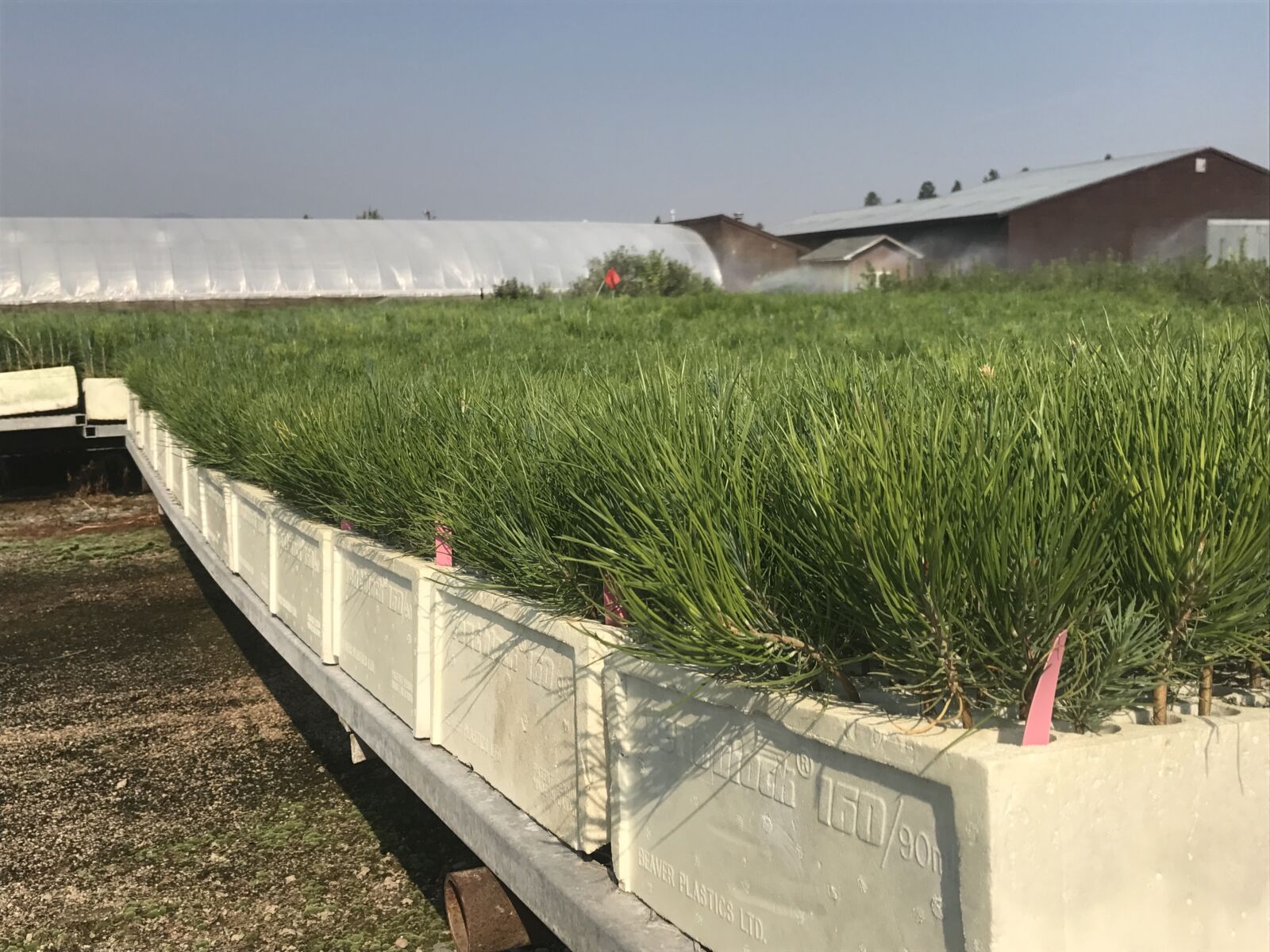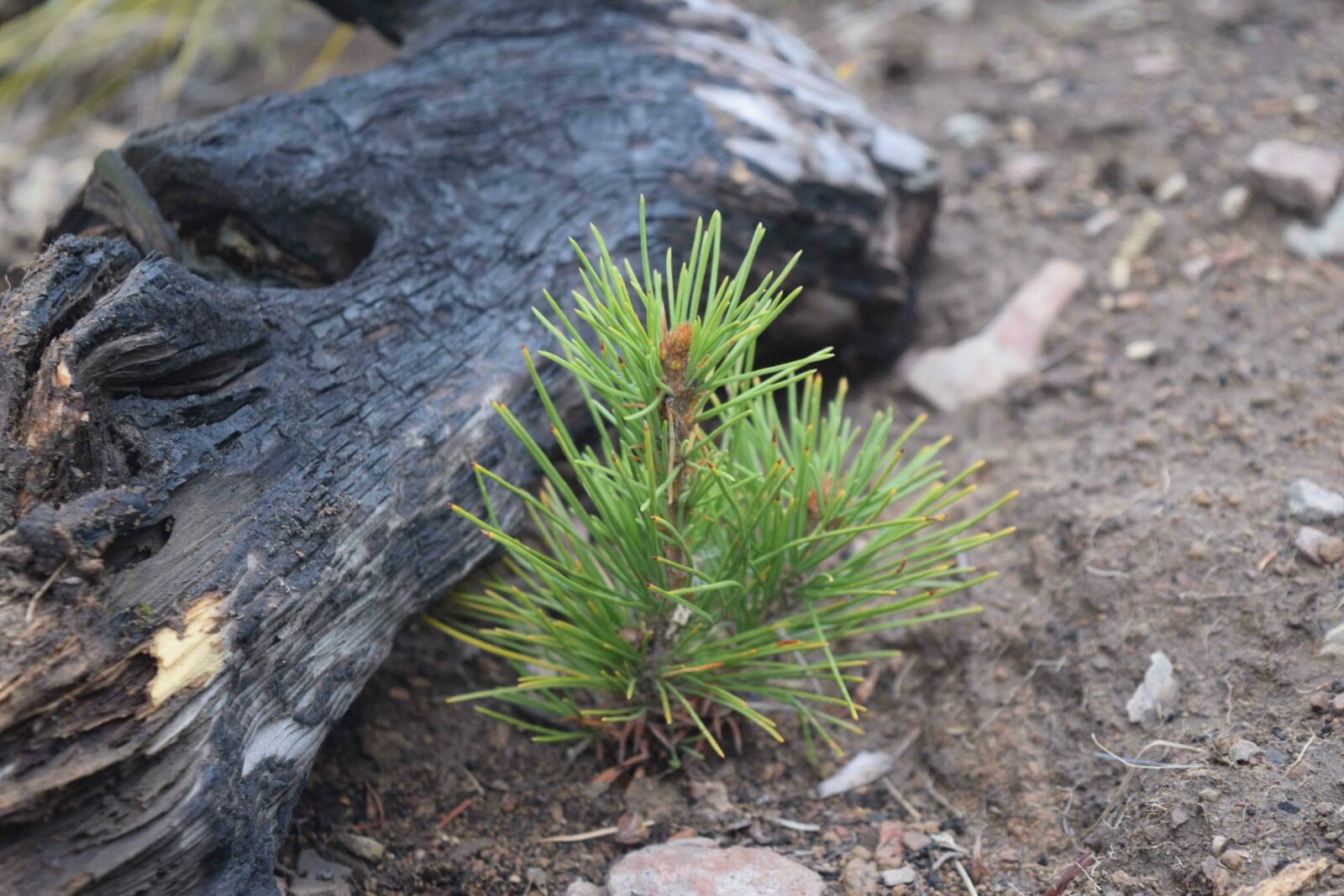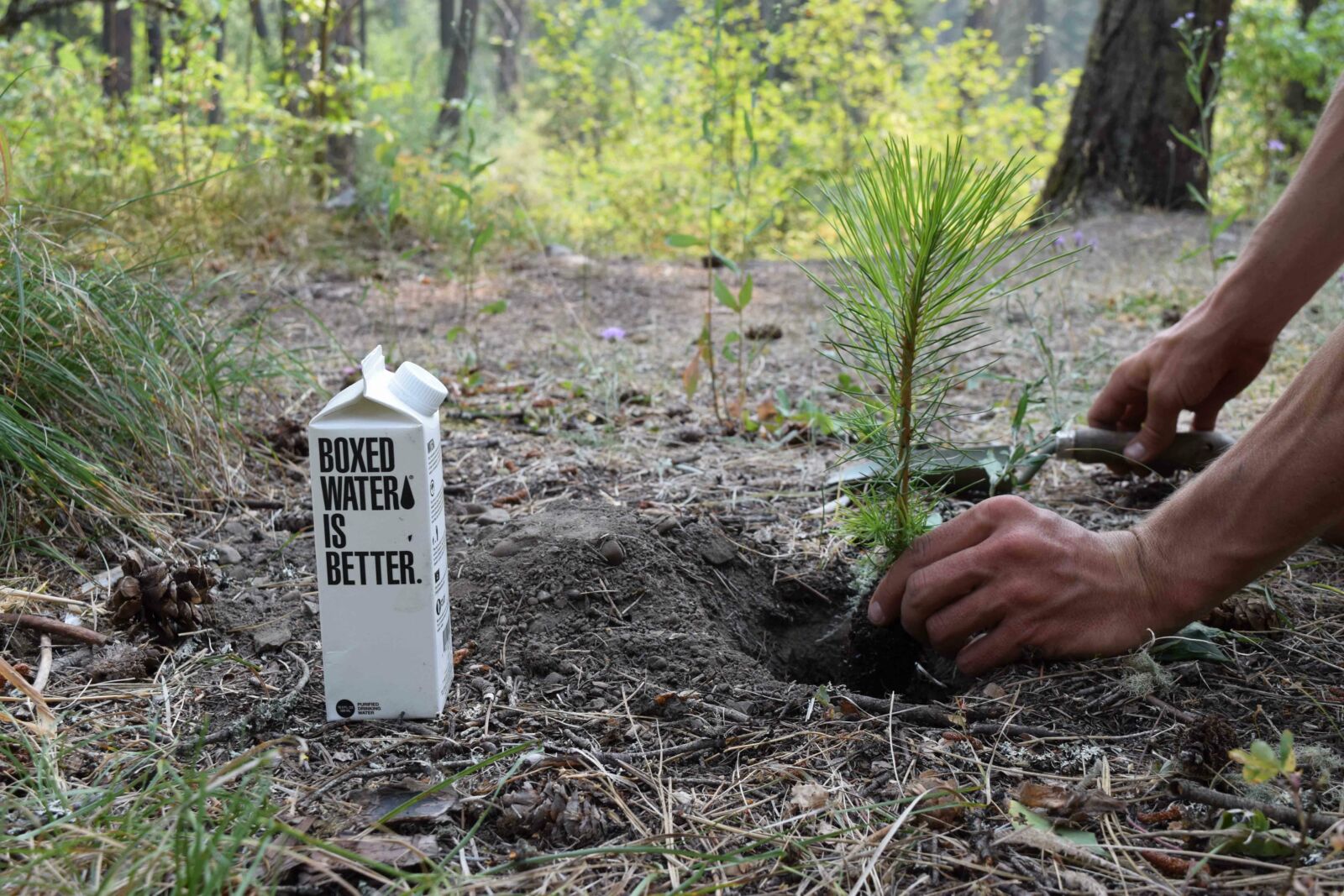The National Forest Foundation receives generous donations from individuals, small businesses and corporations to support tree planting on National Forests. We work closely with the U.S. Forest Service to complete these important projects. So what happens when a partner like Boxed Water gives us a call and says they’d like to plant 1 million trees over five years?
Learn how we go from seeds to trees below.
Area and Design
Each reforestation project has a specific purpose. Wildfire commonly creates a lot of reforestation need, particularly in the Western U.S. Before beginning any part of the reforestation process, the U.S. Forest Service assesses the area, considers the species composition and a number of different environmental factors, then decides how the forest will be planted.
Gathering Seed
In order for a tree to grow, we will of course need a seed—but not just any seed. The Forest Service personnel sources native seeds from areas directly adjacent to the reforestation site. Sometimes climbing high into trees to obtain the seeds, the Forest Service collects cones from the same species that they plan to plant, and from the same elevation. Cones are then broken down to extract seeds.

Growing at the nursery
After staff collect the seeds, they transport the seeds to one of six Forest Service nurseries located across the country. Then they are grown under climate- controlled conditions that mimic their natural environment. Seedlings are typically grown until they are 1-2 years old for most western conifer species. When the seedlings are ready, the Forest Service brings them back to the Forest where their seed came from.

Planting
In the final stage of reforestation, the Forest Service take great care taken to make sure seedlings survive their transition back to the forest. Seedlings are typically stored in refrigerated cooler until the morning that they are planted. Professional tree planting crews fill up their hip bags with hundreds of seedlings at once, and trek across hillsides to plant seedlings.
To give a better chance at survival, seedlings are often planted in “microsites” – tucked in or shaded areas that protect the seedling from direct sun exposure. Swinging their “hoedads” – a special tree planting tool- planters dig a small, deep hole in the ground. They carefully place a seedling in the hole, making sure the root structure is intact and covering the opening with soil. Amazingly, the act of tree planting takes only about 7-10 seconds for each tree.

The nearby downed log will provide some protection for the seedling.

Monitoring
After planting is quality control. Using sampling plots, the Forest Service will randomly select young seedlings and dig them up to make sure they were planted correctly. As seedlings mature, they are monitored after one, three and five years of planting to ensure survival. In some areas, follow up maintenance (like scraping away competing vegetation) or browse protectors are necessary to ensure seedlings survive into the future.
Due to ever-constrained budgets, the Forest Service struggles to execute the number of tree planting projects needed. Thanks to corporate partners like Boxed Water, hundreds of thousands of trees get a new start on our National Forests and Grasslands.
Click here to support tree planting today.

